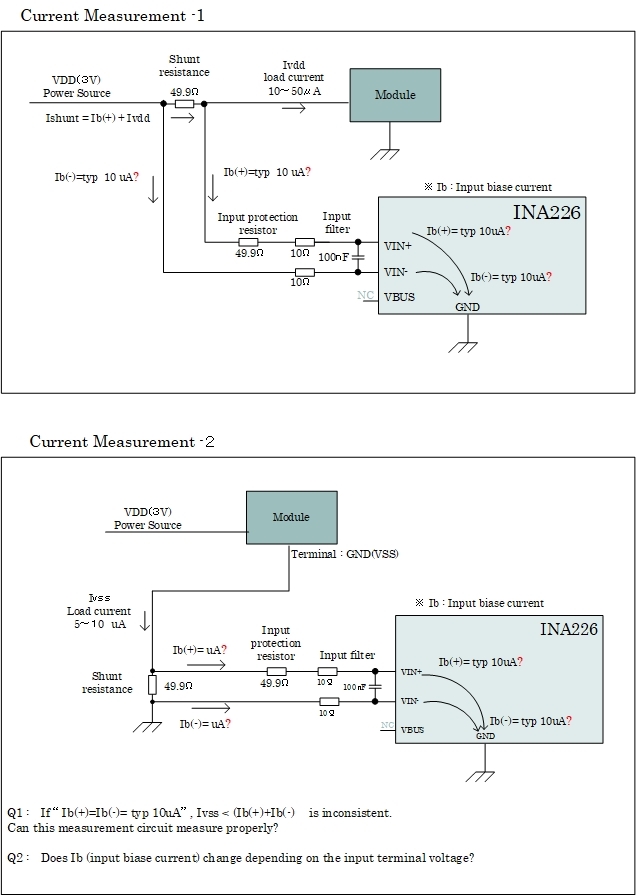Please tell me the influence of IB (Input base current) on the current measurement of uA order.
Q1: The effect of Ib on "Current Measurement-1", and the error that occurs.
Q2: At "Current Measurement-2", if the measured current is Ib(typ=10uA) or less, can the device measure correctly?
If “ Ib(+)=Ib(-)= typ 10uA” , Ivss < (Ib(+)+Ib(-) is inconsistent.
Can this measurement circuit measure properly?
Does Ib (input biase current) change depending on the input terminal voltage?


